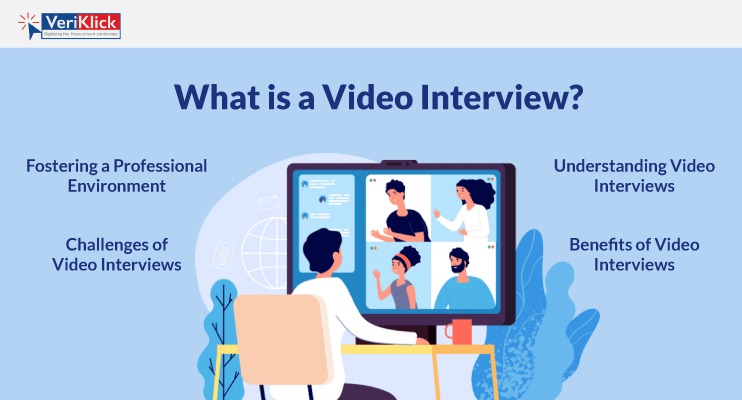In today’s rapidly evolving job market, technology has revolutionized the way companies conduct their hiring processes. One significant development that has gained popularity in recent years is the Video Interview.
Understanding Video Interviews
A video interview is a method of conducting a job interview using video communication technology, allowing employers and candidates to connect remotely. Video interviews can be conducted as live video calls or pre-recorded sessions, utilizing platforms like Zoom, Skype, or Microsoft Teams. Video interviews offer convenience by eliminating the need for travel, saving candidates time and money. They also enable employers to streamline the hiring process, allowing for efficient screening of remote applicants and faster decision-making.
Benefits of Video Interviews
Video interviews provide several advantages over traditional face-to-face interviews.
Video interviews offer convenience and flexibility, saving time and money by eliminating the need for travel. They expand the candidate pool, allowing consideration of applicants from different locations, and increasing the chances of finding the best fit. Enhanced communication enables the assessment of non-verbal cues and facial expressions, aiding hiring decisions. They also streamline the screening process, allowing efficient evaluation of many candidates. Video interviews provide a cost-effective solution by eliminating travel expenses. Video interviews also provide a recorded format, allowing for easy review and comparison of candidate responses. This enhances the evaluation process and facilitates collaboration among hiring teams. Moreover, video interviews promote inclusivity by accommodating candidates with disabilities or those facing logistical challenges, ensuring a fair and accessible interview experience for all.
Challenges of Video Interviews
Despite their benefits, video interviews come with their own set of challenges. Technical issues like poor internet connections or glitches in video conferencing software can disrupt the interview flow and hinder effective communication. Video interviews lack certain non-verbal cues, such as body language and eye contact, which are more easily observed in face-to-face interviews. Participants must adapt to this absence and find alternative ways to convey their engagement and interest.
Fostering a Professional Environment
Establishing a professional and engaging atmosphere during a video interview requires careful attention to detail. Candidates should choose a quiet and well-lit environment for the interview and dress appropriately. Maintaining eye contact with the camera is crucial to establish a connection with the interviewer. Interviewers, too, should strive to create a welcoming environment and engage candidates effectively to accurately assess their qualifications and cultural fit.
Video interviews have emerged as a valuable tool in the modern hiring process, offering convenience, time efficiency, and flexibility for both candidates and employers. However, participants must also be mindful of potential challenges, such as technical issues and the need to adapt to a digital environment. With careful preparation and a focus on creating a professional atmosphere, video interviews can be an effective method for finding the right talent in today’s dynamic job market.
Source URL: – Click Here

